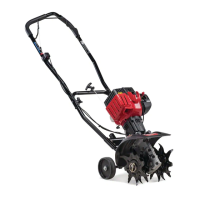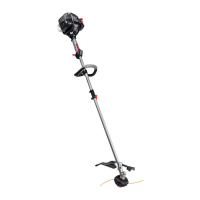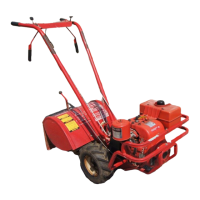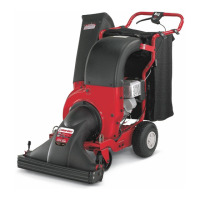Avoidthetemptationtopushdownonthehandlebarsinan
attempttoforcethetillertodigdeeper.Doingsotakesthe
weightoffthepoweredwheels,causingthemtolosetraction.
Withoutthewheelstoholdthetillerback,thetineswill
attempttopropelthetillerbackward,towardstheoperator.
Whencultivating(breakingupsurfacesoilaroundplantsto
destroyweeds,seeFig.5-4),Adjustthetinestodigonly1"
to2"deep.Usingshallowtillingdepthshelpspreventinjury
totheplantswhoserootsoftengrowclosetothesurface.
Ifneeded,liftuponthehandlebarsslightlytopreventthe
tinesfromdiggingtoodeeply.(Cultivatingonaregularbasis
notonlyeliminatesweeds,italsoloosensandaeratesthe
soilforbettermoistureabsorptionandfasterplantgrowth.)
Wateringthegardenareaafewdayspriortotillingwillmake
tillingeasier,aswilllettingthenewlyworkedsoilsetfora
dayortwobeforemakingafinal,deeptillingpass.
Whenfinishedinonedirection,makeasecondpassat
arightangle,asshowninFig.5-6.Overlapeachpassfor
bestresults(inveryhardground,itmaytakethreeorfour
passestothoroughlypulverizethesoil.)
_m
IIIimll _ mllmlm IImm
Imam
f
J
Figure 5-6
If the garden size will not permit lengthwise and then crosswise
tilling, overlap the first passes by one-half a tiller width, followed
by successive passes at one-quarter width. See Fig. 5-7.
Figure 5-4
SuggestedTilling Patterns
When preparing a seedbed, go over the same path twice in
the first row, then overlap one-half the tiller width on the
rest of the passes. See Fig. 5-5.
Figure 5-7
Figure 5-5 SECTION S -- OPERATION 13
